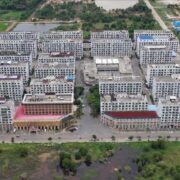Prewar beauty queen

Beauty contest bloopers on social media make for light entertainment to end a long working day.
While browsing prewar Philippine periodicals, I would come across news items on early beauty contests before the Miss Universe and Binibining Pilipinas franchise changed everything. First, were the Rizal Day Queens and Parades, then there were the Carnival Queens. No swimsuit category then. In the 1980s, I would see so many Carnival and Carnival Beauty Queen photos for sale in the Ermita antique shops for nothing. Today, these are scarce, precious, and provide content for specialized blogs like that of Alex D.R. Castro’s “Manila Carnivals, 1908-1939” with material that should rightfully be in a doctoral dissertation.
If we are to go by three prewar Carnival Queens from the University of the Philippines (UP), it is obvious their background, social class, and education set them apart, not just beauty. Pacita de los Reyes, Miss Philippines 1929, later became a lawyer. Maria Kalaw, Miss Philippines 1931, later served as senator and was one of the memorable chairs of the Board of Censorship for Motion Pictures.
Clarita Tan Kiang was the third UP co-ed to be crowned Miss Philippines 1934. I never met her but knew of her from an interview by Engracia Laconico, Miss Philippines 1933. The conversation between them was fascinating because they came from a generation that was breaking out of the strictures of Rizal’s Maria Clara. They were from a generation that spoke English instead of Spanish, dressed differently, danced daringly, and aspired for a life outside of home and hearth. They went to university and looked forward to careers among and in competition with men. They kept “exquisite femininity in the age of modernism and grace.”
Clarita Tan Kiang was the third UP co-ed to be crowned Miss Philippines. “I like music,” she told the interviewer to break the ice, “music, it seems to me, is the highest form of art man has ever conceived. I like to hear music. And I like to sing. I music, the heart, the soul, and the mind find the medium towards peace. Beauty as lived in the theme of a beautiful song is beauty that will never die.” I figured this woman would clinch the Q&A anytime; for the talent portion, she could sing. She was a student of voice culture at the UP Conservatory of Music.
Each generation has its own distinct beauty queens, beauty changing in the eye of the beholder.
Ambeth is a Public Historian whose research covers 19th century Philippines: its art, culture, and the people who figure in the birth of the nation. Professor and former Chair, Department of History, Ateneo de Manila University, he writes a widely-read editorial page column for the Philippine Daily Inquirer, and has published over 30 books—the most recent being: Martial Law: Looking Back 15 (Anvil, 2021) and Yaman: History and Heritage in Philippine Money (Bangko Sentral ng Pilipinas, 2021).


















